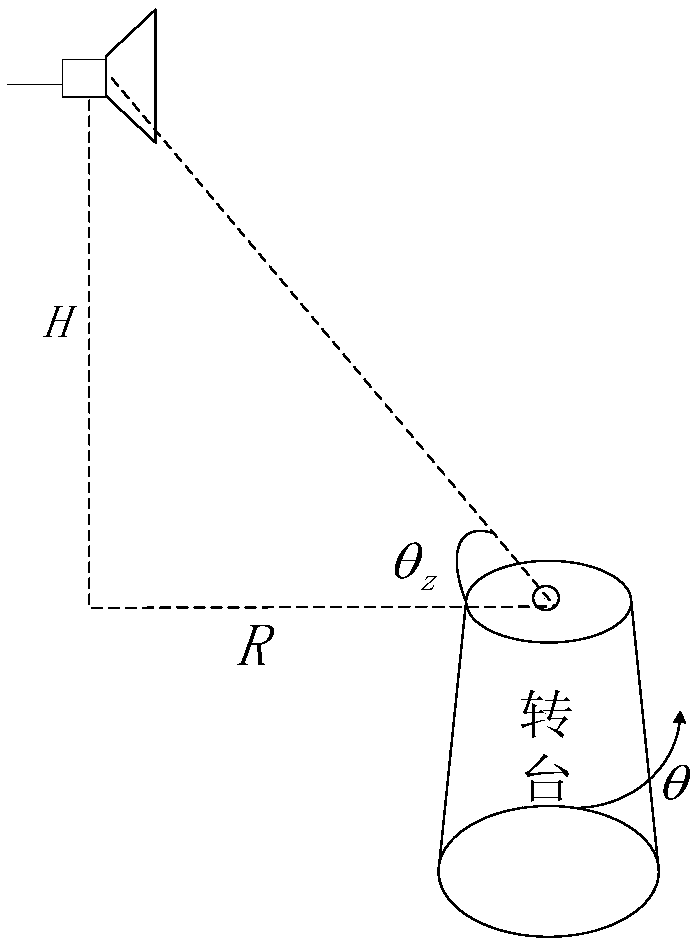Near-field circumferential SAR rapid three-dimensional imaging method
A technology of three-dimensional imaging and two-dimensional imaging, which is applied in the field of three-dimensional imaging to achieve precise imaging, improve computing speed, and solve the effects of rotation angle restrictions
- Summary
- Abstract
- Description
- Claims
- Application Information
AI Technical Summary
Problems solved by technology
Method used
Image
Examples
Embodiment
[0058] Step 1: Obtain the echo data of two-dimensional imaging: First, ignore the influence of height on imaging and reduce the target dimension from three-dimensional to two-dimensional, assuming that all points at all heights in the scene are located on the ground plane. The radar transmits a chirp signal p(t) to the target, and the target reflection function is set to f(x,y), and the target echo signal s(t,θ) is obtained according to the circular SAR geometric imaging model, and s(t,θ) can be expressed as for:
[0059]
[0060] Where c represents the speed of light, R(θ) represents the distance between the radar and the target when the target rotates with the radar at an angle of θ, R represents the horizontal distance between the radar and the center of the turntable, which is equivalent to the radar movement radius, and H represents the vertical height between the radar and the ground.
[0061] In this embodiment, the center frequency is S-band, the radar height is 5...
PUM
 Login to View More
Login to View More Abstract
Description
Claims
Application Information
 Login to View More
Login to View More - Generate Ideas
- Intellectual Property
- Life Sciences
- Materials
- Tech Scout
- Unparalleled Data Quality
- Higher Quality Content
- 60% Fewer Hallucinations
Browse by: Latest US Patents, China's latest patents, Technical Efficacy Thesaurus, Application Domain, Technology Topic, Popular Technical Reports.
© 2025 PatSnap. All rights reserved.Legal|Privacy policy|Modern Slavery Act Transparency Statement|Sitemap|About US| Contact US: help@patsnap.com



